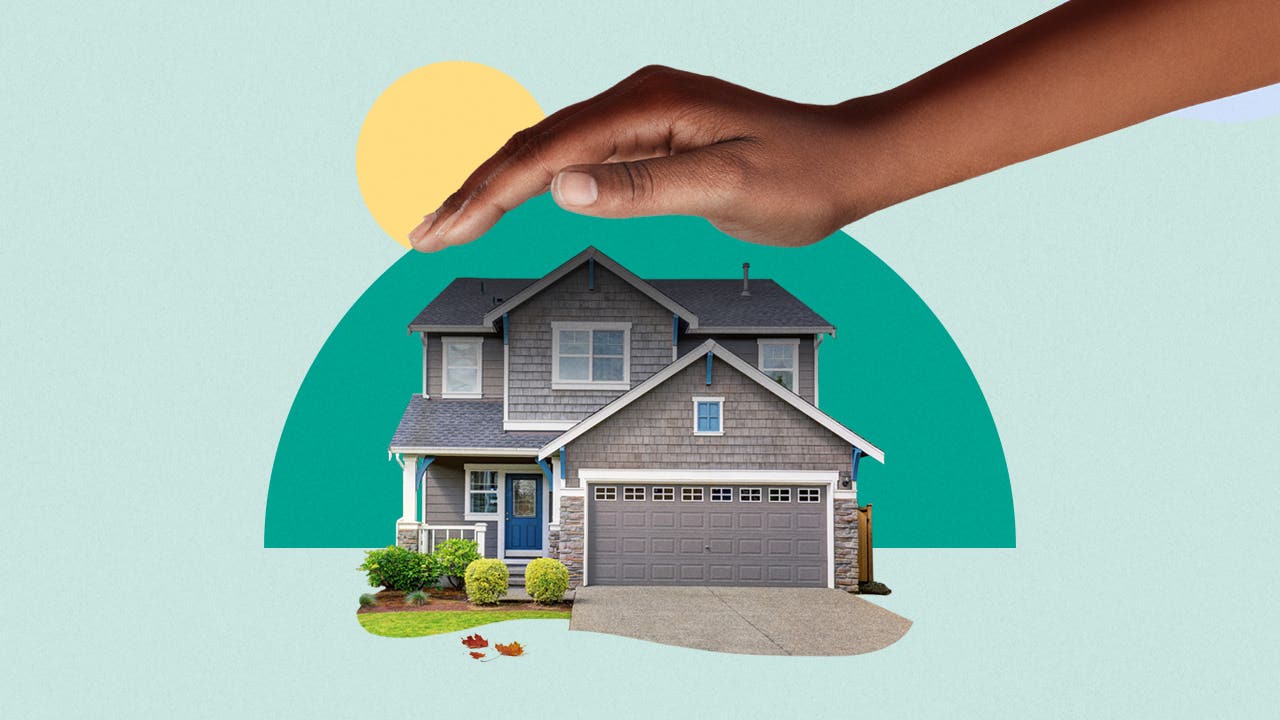Mortgage protection insurance: What it is and when you might need it

Key takeaways
- Not to be confused with private mortgage insurance (PMI), mortgage protection insurance (MPI) helps cover your mortgage payment if you die or become disabled and can’t work.
- MPI is similar to life insurance, but the beneficiary is the deceased’s mortgage lender.
- MPI is not as flexible as other types of insurance like disability insurance and life insurance.
What is mortgage protection insurance?
Mortgage protection insurance is an insurance policy that pays off the remainder of your mortgage if you pass away or if you become disabled and can’t work. In that way, it functions similarly to life insurance and disability insurance. Unlike those types of insurance, however, the payment does not go to you or your heirs but goes directly to your mortgage lender to pay off the loan.
Generally, MPI policies — which can often be purchased from banks and mortgage lenders — only cover the principal and interest portion of a mortgage payment. That means other fees like HOA dues, property taxes and homeowners insurance would still be your responsibility. You might be able to add a policy rider, however, to cover these expenses.
As you pay off your mortgage, the insurance payout decreases, but your premiums stay the same. For many, this is a major drawback of MPI. Still, these types of policies can be easier to get than life insurance because there’s no requirement for a medical evaluation.
Pros and cons of mortgage protection insurance
Mortgage protection insurance might be worth it for people who can’t get approved for traditional forms of life or disability insurance, or for whom premiums for a traditional policy are cost-prohibitive. Still, there are pros and cons:
Pros of MPI
- Guaranteed acceptance: Most MPI policies are issued on a “guaranteed acceptance” basis. That can be advantageous if you have a health condition and pay high rates for life insurance or struggle to obtain coverage.
- Peace of mind: An MPI policy can provide you and your family with a sense of security.
Cons of MPI
- More cash out of your pocket: The MPI premium adds more of a burden to your monthly budget.
- Might not be the best use of your money: If your mortgage is nearly paid off or you paid for the home with sale proceeds from another home, paying for an MPI policy might not make the most financial sense. Instead, you might consider putting the money in an emergency fund or retirement portfolio.
- Payoff amount declines: If you plan to make extra payments to pay off your mortgage early, you might not benefit as much from MPI because the loan payoff amount decreases as the mortgage is paid down. (Note: Some newer MPI policies include what’s known as a level-death benefit, meaning that the payouts won’t decline.)
- Potentially better alternatives: Because MPI is paid directly to your lender, it won’t provide any financial protection to your loved ones if you die other than paying off your mortgage. A life insurance policy might make more sense because the policy is paid to your beneficiaries.
How much does mortgage protection insurance cost?
The amount you’ll pay for mortgage protection insurance depends on a variety of factors, including the insurer and the current balance of your mortgage.
Where to buy mortgage protection insurance
If you think MPI is an option for you, there are three general places to get it:
- Your mortgage lender: Many lenders offer MPI directly to their borrowers. If you’re curious about MPI, contact your mortgage lender to see if it’s an option.
- A private insurance company: Several private insurance companies also offer MPI.
- A life insurance provider: Many life insurance providers also offer MPI, sometimes referring to it as “mortgage life insurance.”
Do you need mortgage protection insurance?
MPI is not required, and not always a financially smart move. You can get similar coverage through a sufficient life insurance policy by using the DIME (debt, income, mortgage, education) method, which takes into account your mortgage when you decide how much life insurance to purchase.
However, MPI can be a good choice if your employment is unstable and you might need assistance paying your mortgage in the future. It can also be helpful for individuals who do not qualify for or can’t afford a traditional life insurance policy.
Differences between MPI, PMI and MIP
Mortgage protection insurance can easily be confused with another abbreviation: PMI, or private mortgage insurance.
- PMI: If you’re getting a conventional mortgage with less than 20 percent down, you’re required to pay PMI until you accumulate 20 percent equity in your home, either by paying down your loan per the repayment schedule, prepaying your loan or having your home reappraised. PMI doesn’t protect you, however — it protects the mortgage lender if you were to stop paying back your loan.
- MIP: There’s yet another acronym: MIP, which stands for mortgage insurance premium and applies to FHA loans. Like PMI, MIP protects the lender, not you. However, unlike PMI, you’ll pay MIP for the duration of the loan term, in most cases.
- MPI: An MPI policy also protects the lender, but is an entirely optional policy. This is the primary contrast to PMI and MIP, which are required depending on your down payment size. In addition, MPI is designed to pay out when you die. PMI and MIP, on the other hand, pays out if you default on your mortgage.
Mortgage protection insurance vs. life insurance
While MPI and life insurance both pay out benefits upon your death, life insurance is more flexible. The beneficiary of a life insurance policy is usually a family member who can use the funds however they see fit. In the case of MPI, the beneficiary is your lender, who will only use the payout to repay the mortgage.Life insurance companies also offer a wider range of coverage and premium policies. MPI limits coverage based on your property and personal health.
FAQ
You may also like

Cheap no down payment car insurance

What happens when your home insurance lapses?

I’m not a homeowner. Here’s why the home insurance crisis keeps me up at night




